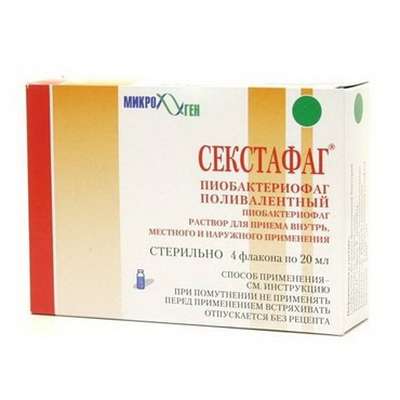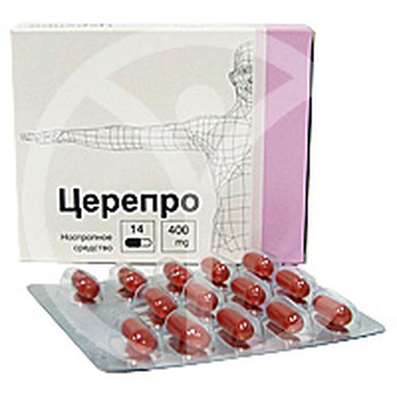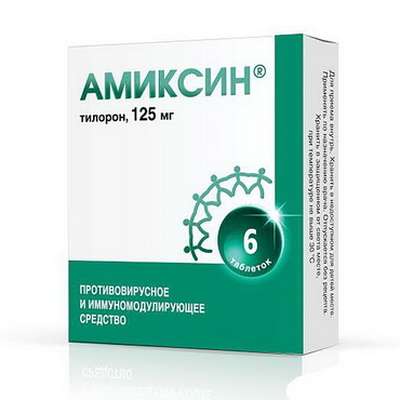Instruction for use: Tantum Verde
I want this, give me price
Active substance Benzydamine
ATX code M02AA05 Benzydamine
Pharmacological group
Other non-narcotic analgesics, including non-steroidal and other anti-inflammatory drugs
Dental tools
Nosological classification (ICD-10)
B37.0 Thyroid gland
Mycotic seizure, Thrush of the oral cavity, Atrophic candidiasis of the oral cavity, Fungal diseases of the mouth, Fungal infections of the oral cavity, Fungal infections and inflammatory diseases of the mouth, Candidiasis of the gastrointestinal tract, Candidiasis of skin and mucous membranes of mouth and mouth, Candidiasis of the mouth, Candidiasis of the oral cavity, Candidiasis with lesions of the skin and mucous membranes, Candidiasis of the oral mucosa, Candidiasis of mucous membranes, Candidiasis of mucous membranes and skin, Candidiasis of the mucous membranes of the mouth and throat, Candidiasis of oral cavity and pharynx, Dermal-mucosal candidiasis of the oral cavity, Oropharyngeal candidiasis, Oropharyngeal candidiasis, Chronic atrophic candidiasis of the oral cavity, Chronic candidiasis of mucous membranes
J02 Acute pharyngitis
Inflammation of the nasopharynx, Inflammatory disease of the oropharynx, Inflammatory process of pharynx, Infectious diseases of ENT organs, Sore Throat Infection ,Exacerbation of inflammatory diseases of the pharynx and oral cavity, Pharyngitis, Pharyngitis acute, Pharyngitis, Pharyngolaringitis
J03 Acute tonsillitis [sore throat]
J04.0 Acute laryngitis
Lektorsky laryngitis, Acute catarrhal Laryngitis,Laryngitis is an acute abscess
J31.2 Chronic pharyngitis
Pharyngitis chronic, Exacerbation of inflammatory diseases of the pharynx and oral cavityHypertrophic pharyngitis, Inflammatory process of pharynx, Sore Throat Infection, Infectious-inflammatory diseases of the pharynx, Infectious-inflammatory diseases of the oral cavity and pharynx, Atrophic pharyngitis
J35.0 Chronic tonsillitis
Tonsillitis chronic, Inflammatory diseases of the tonsils, Angina chronic, Chronic hypertrophic tonsillitis, Tonsillar angina
J37.0 Chronic laryngitis
Chronic atrophic laryngitis
K05 Gingivitis and periodontal disease
Gingivitis, Inflammatory Gum Disease, Inflammatory diseases of the oral cavity, Hyperplastic gingivitis, Diseases of the mouth, Catarrhal gingivitis, Erythematous gingivitis, Ulcerative gingivitis, Exacerbation of inflammatory diseases of the pharynx and oral cavity, Bleeding from the gums, Epstein cysts
K05.4 Periodontal disease
Alveolar pyorrhea, Amphodontosis, Chronic parodontosis, Superficial and deep periodontitis, Pyorrhea
K11.2 Sialadenite
Calculous inflammation of the salivary glands, Stones of the ducts of the salivary glands
K11.8 Other diseases of the salivary glands
K12 Stomatitis and Related Lesions
Bacterial stomatitis, Inflammatory diseases of the oral cavity, Inflammatory diseases of tissues of the oral cavity, Inflammatory processes in the oral cavity, Fungal diseases of the mouth, Fungal infections of the oral cavity, Fungal infections and inflammatory diseases of the mouth, Diseases of the mouth, Infectious-inflammatory disease of the oral cavity, Exacerbation of inflammatory diseases of the pharynx and oral cavity, Stomatitis, Angular stomatitis, Chronic recurrent stomatitis, Ulcerative necrotic diseases of the oral mucosa, Ulcerative necrotic gingivostomatitis, Ulcerative stomatitis, Erosive-ulcerative lesion of the oral mucosa, Erosive-ulcerative lesions of the mucous membrane of the oral cavity, Erotic mucous membrane of the oral cavity, Recurrent ulcerative stomatitis
K13.7 Other and unspecified lesions of oral mucosa
Aspirin burn of the oral mucosa, Gum pain when wearing dentures, Inflammation of the mouth, Inflammation of the oral mucosa, Inflammation of the oral mucosa after radiation therapy, Inflammation of the oral mucosa after chemotherapy, Inflammation of the oral mucosa, Inflammation of the mucous membranes of the mouth, Inflammatory diseases of the oral cavity, Inflammatory process of pharynx, Disease of the oral mucosa, Injuries to the oral cavity and larynx, Injuries of the oral mucosa, Trophic diseases of the oral mucosa, Erosive-ulcerative periodontal disease, Erosive-ulcerative lesion of the oral mucosa, Erotic mucous membrane of the oral cavity, Erotic-ulcerative periodontal lesions, Erotic-ulcerative lesions of the oral mucosa, Radio-epileleitis, Irritation from dental prostheses, Irritation of the oral mucosa with dentures and braces, Oral cavity, When wearing dentures
K14.0 Glossitis
R52.9 Unspecified Pain
Pain after cholecystectomy, Pain shooting, Non-malignant pain, Obstetric and gynecological pain, Pain syndrome, Pain in the postoperative period, Pain in the postoperative period after orthopedic surgery, Pain of inflammatory genesis, Pain than cancer genesis, Pain syndrome after diagnostic procedures, Pain after surgery Diagnostic, Pain after surgery, Pain after orthopedic surgery, Pain after injuries, Pain after the removal of hemorrhoids, Pain at the non-rheumatic inflammation of nature, Pain in inflammatory lesions of the peripheral nervous system, Pain in diabetic neuropathy, Pain in acute inflammatory diseases of the musculoskeletal system, Pain when the tendon pathology, Pain smooth muscle spasm, Pain spasm of smooth muscles (renal and biliary colic, intestinal spasms, dysmenorrhea), Pain spasm of smooth muscles of internal organs, Pain spasm of smooth muscles of internal organs (kidney and biliary colic, intestinal spasms, dysmenorrhea), Pain in trauma syndrome, Pain with injuries and after surgical interventions, Pain in chronic inflammatory diseases of the musculoskeletal system, Pain with duodenal ulcer, Pain syndrome in gastric ulcer, Pain syndrome in gastric ulcer and duodenal ulcer, pain, Pain during menstruation, pain syndromes, painful condition, Painful foot fatigue, Sore gums when wearing dentures, Soreness of the cranial nerves exit points, Painful menstrual irregularities, Painful dressings, Painful muscle spasm, Painful teeth growth, Melosalgia, Pain in the area of the surgical wound, Pain in the postoperative period, Pain in the body, Pain after diagnostic procedures, Pain after orthopedic surgery, Pain after surgery, The pains of the flu, Pain in diabetic polyneuropathy, Pain for burns, Pain during sexual intercourse, Pain during diagnostic procedures, Pain during therapeutic procedures, for colds Pain, Pain in sinusitis, Pain in trauma, Pain traumatic, The pain in the postoperative period, Pain after diagnostic procedures, The pain after sclerotherapy, Pain after surgery, postoperative Pain, Pain postoperative and posttraumatic, posttraumatic pain, Pain when swallowing, Pain in infectious and inflammatory diseases of the upper respiratory tract, The pain of burns, The pain in traumatic muscle injury, Pain in trauma, The pain of tooth extraction, The pain of traumatic origin, Pain caused by spasm of smooth muscles, Expressed pain syndrome, Expressed pain syndrome, traumatic origin, Postoperative pain, Post-traumatic pain, Post-traumatic pain syndrome, Torpid pain, Traumatic pain, Traumatic pain, Mild pain, Moderately severe pain, Moderate pain, Polyarthralgia with polymyositis
S02.4 Fracture of the malar bone and maxilla
Fracture of the jaw, Fractures of jaws and adjacent structures
S02.6 Fracture of lower jaw
Fracture of the jaw, Fractures of jaws and adjacent structures
Z01.2 Dental examination
tooth Extirpation, Anesthesia of mucous membranes, Dental intervention
Z100 * CLASS XXII Surgical practice
Abdominal surgery, adenomectomy, Amputation, Coronary angioplasty, Angioplasty of the carotid arteries, Antiseptic skin treatment for wounds, Antiseptic Hand, Appendectomy, atherectomy, Balloon coronary angioplasty, Vaginal hysterectomy, The coronary bypass, Interventions in the vagina and cervix, Interventions on the bladder, Intervention in the mouth, Restoration and reconstructive surgery, Hand hygiene of medical personnel, Gynecologic surgery, Gynecological intervention, Gynecological surgery, Hypovolemic shock during operations, Disinfection of purulent wounds, Disinfection of wounds edges, Diagnostic intervention, Diagnostic procedures, Cervical Diathermocoagulation, Long-surgery, Replacing the fistula catheters, Infection in orthopedic surgery, Artificial heart valve, cystectomy, Short-term outpatient surgery, Short-term operation, Short surgical procedures, Krikotireotomiya, Blood loss during surgery, Bleeding during surgery and in the postoperative period, Kuldotsentez, laser photocoagulation, laser coagulation, retinal laser coagulation, Laparoscopy, Laparoscopy in Gynecology, CSF fistula, Small gynecological operations, Small surgical procedures, Mastectomy and subsequent plastic, mediastinotomy, Microsurgical operations on the ear, Mukogingivalnye operation, suturing, Minor surgery, neurosurgical operation, Immobilization of the eyeball in ophthalmic surgery, testectomy, pancreatectomy, Perikardektomiya, The period of rehabilitation after surgery, The period of, convalescence after surgery, Percutaneous transluminal coronary angioplasty, Pleural thoracentesis, Pneumonia postoperative and posttraumatic, Preparation for surgical procedures, Preparation for surgery, Preparation of the surgeon's hands before surgery, Preparation of the colon for surgical procedures, Postoperative aspiration pneumonia in neurosurgical and thoracic surgery, Postoperative nausea, Postoperative bleeding, postoperative granuloma, postoperative shock, The early postoperative period, myocardial revascularization, Radiectomy, gastric Resection, bowel resection, uterine Resection, liver Resection, enterectomy, Resection of part of the stomach, Reocclusion of the operated vessel, Bonding tissues during surgical procedures, Removal of sutures, Condition after eye surgery, Condition after surgery, Condition after surgery in the nasal cavity, Condition after gastrectomy, Status after resection of the small intestine, Condition after tonsillectomy, Condition after removal of the duodenum, Condition after phlebectomy, Vascular surgery, Splenectomy, Sterilization of surgical instruments, Sterilization of surgical instruments, sternotomy, Dental surgery, Dental intervention in periodontal tissues, strumectomy, Tonsillectomy, Thoracic surgery, total gastrectomy, Transdermal intravascular coronary angioplasty, Transurethral resection, Turbinektomiya, Removal of a tooth, cataract surgery, Removal of cysts, tonsillectomy, Removal of fibroids, Removing the mobile primary teeth, Removing polyps, Removing broken tooth, Removal of the uterus body, Removal of sutures, Urethrotomy, Fistula likvoroprovodyaschih ways, Frontoetmoidogaymorotomiya, Surgical infection, Surgical treatment of chronic limb ulcersm, Surgery, The surgery in the anal area, The surgery on the colon, Surgical practice, The surgical procedure, Surgical interventions, Surgery on the gastrointestinal tract, Surgical procedures on the urinary tract, Surgical procedures on the urinary system, Surgical intervention of the genitourinary system, Surgical procedures on the heart, Surgical manipulation, surgery, Surgery on the veins, Surgical intervention, Vascular surgery, Surgical treatment of thrombosis, cholecystectomy, Partial gastric resection, transabdominal hysterectomy, Percutaneous transluminal coronary angioplasty, Percutaneous transluminal angioplasty, Coronary artery bypass, tooth Extirpation, Extirpation of milk teeth, pulpectomy, pulsative cardiopulmonary bypass, tooth Extraction, teeth Extraction, cataract extraction, Electrocoagulation, endourological intervention, episiotomy, Etmoidotomiya, Complications after tooth extraction
Composition
Tablets for absorption 1 table.
active substance:
benzidamine hydrochloride 3 mg
auxiliary substances: isomaltose - 3183 mg; racemtol - 4 mg; aspartame - 3.5 mg; citric acid monohydrate - 2 mg; flavoring mint - 5 mg, flavoring lemon - 1,5 mg, dye quinoline yellow (E104) - 0.035 mg, dye indigo carmine (E132) - 0.015 mg
Description of dosage form
Green translucent square tablets with a deepening in the center with a characteristic mint-lemon scent.
pharmachologic effect
Pharmacological action - anti-inflammatory local anesthetic local.
Pharmacodynamics
Benzidamine - NSAIDs, belongs to the group of indazoles. It has anti-inflammatory and local anesthetic effect, antiseptic action against a wide range of microorganisms. The mechanism of action of the drug is associated with the stabilization of cell membranes and inhibition of GH synthesis.
Benzydamine has an antibacterial effect due to the rapid penetration of microorganisms through the membranes, followed by damage to cellular structures, metabolic disorders and cell lysosomes.
Has an antifungal effect against Candida albicans. It causes structural modifications of the cell wall of fungi and their metabolic chains, thus, prevents their reproduction, which was the basis for the use of benzidamine in inflammatory processes in the oral cavity, incl. infectious etiology.
Pharmacokinetics
With topical application, the preparation is well absorbed through the mucous membranes and penetrates into inflamed tissues, is found in blood plasma in an amount insufficient to obtain systemic effects.
Excretion of the drug occurs mainly by the kidneys, in the form of inactive metabolites or conjugation products.
Indications
Symptomatic therapy of pain syndrome, incl. with infectious and inflammatory diseases of the oral cavity and ENT organs of different etiology:
Gingivitis, glossitis, stomatitis (including after radiation and chemotherapy);
pharyngitis, laryngitis, tonsillitis;
Candidiasis of the oral mucosa (as part of combination therapy);
calculous inflammation of the salivary glands;
after surgical interventions and traumas (tonsillectomy, jaw fractures);
after treatment and removal of teeth;
parodontosis;
infectious and inflammatory diseases requiring systemic treatment (as part of combination therapy).
Contraindications
hypersensitivity to benzydamine or other components of the drug;
intolerance to fructose;
phenylketonuria;
children's age till 6 years.
With caution: hypersensitivity to acetylsalicylic acid or other NSAIDs, bronchial asthma (including in the anamnesis).
pregnancy and lactation
The drug TantumŪ Verde should not be used during pregnancy and during breastfeeding.
Side effects
Classification of the incidence of adverse events WHO: very often - ≥1 / 10; often from ≥1 / 100 to <1/10; infrequently - from ≥1 / 1000 to <1/100; rarely - from ≥1 / 10000 to <1/1000; very rarely - <1/10000; frequency is unknown - can not be estimated from the available data.
In each group, undesirable effects are presented in order of decreasing severity.
Local reactions: rarely - dry mouth, burning in the mouth; frequency unknown - numbness in the oral cavity.
Allergic reactions: infrequently - photosensitivity; rarely - hypersensitivity reactions, skin rash, itchy skin; very rarely - angioedema, laryngospasm; frequency unknown - anaphylactic reactions.
If any of the side effects described in the description are aggravated or any other side effects not listed in the description are noted, the doctor should be informed immediately.
Interaction
Studies of interaction with other drugs have not been conducted.
Dosing and Administration
Locally, after eating. Keep the tablets in the mouth until completely dissolved, do not swallow, do not chew. Adults (including elderly patients) and children older than 6 years - 1 table. for resorption 3 times a day. Do not exceed the recommended dose. In children from 6 to 12 years of age, the drug is administered under the supervision of an adult.
The duration of treatment should not exceed 7 days. If after treatment within 7 days the improvement does not occur or there are new symptoms, it is necessary to consult a doctor.
Use the drug only according to the method of administration and at the doses specified in the description. If necessary, consult a doctor before using the drug.
Overdose
At present, no cases of an overdose of TantumŪ Verde have been reported.
Symptoms: with accidental ingestion of the drug, vomiting, abdominal cramps, anxiety, fear, hallucinations, convulsions, ataxia, fever, tachycardia, respiratory depression are possible. When using the drug in accordance with the method of use, an overdose is unlikely.
Treatment: symptomatic; clean the stomach by inducing vomiting, or rinse the stomach using a gastric tube (under the supervision of a doctor); provide medical supervision, maintenance therapy and the necessary hydration. The antidote is unknown.
special instructions
When using the drug TantumŪ Verde, the development of hypersensitivity reactions is possible. In this case, it is recommended that you stop treatment and consult with your doctor to prescribe appropriate therapy.
In a limited number of patients, the presence of ulcers in the throat and oral cavity may indicate a more serious pathology. If symptoms persist for more than 3 days, you should consult your doctor.
The use of TantumŪ Verde is not recommended in patients with hypersensitivity to acetylsalicylic acid or other NSAIDs. The drug TantumŪ Verde should be used with caution in patients with bronchial asthma in the anamnesis because of the possibility of developing their bronchospasm on the background of taking the drug.
The drug contains isomaltose and therefore is not recommended for patients with hereditary intolerance to fructose.
The use of the drug in children is possible only under the supervision of adults to avoid swallowing the pill.
Influence on the ability to drive vehicles, mechanisms. Does not affect.
Form of issue
Tablets for resorption, 3 mg. 10 tab., Each of which is wrapped in paraffin paper, is placed in a double-layered aluminum foil wrapper; 2 wrappers with 10 tab. in each place in a cardboard box.
Conditions of leave from pharmacies
Without recipe.
Storage conditions for TantumŪ Verde
In the dark place at a temperature of no higher than 25 ° C.
Keep out of the reach of children.
Shelf life of TantumŪ Verde
4 years.
Do not use after the expiry date printed on the package.

 Cart
Cart





